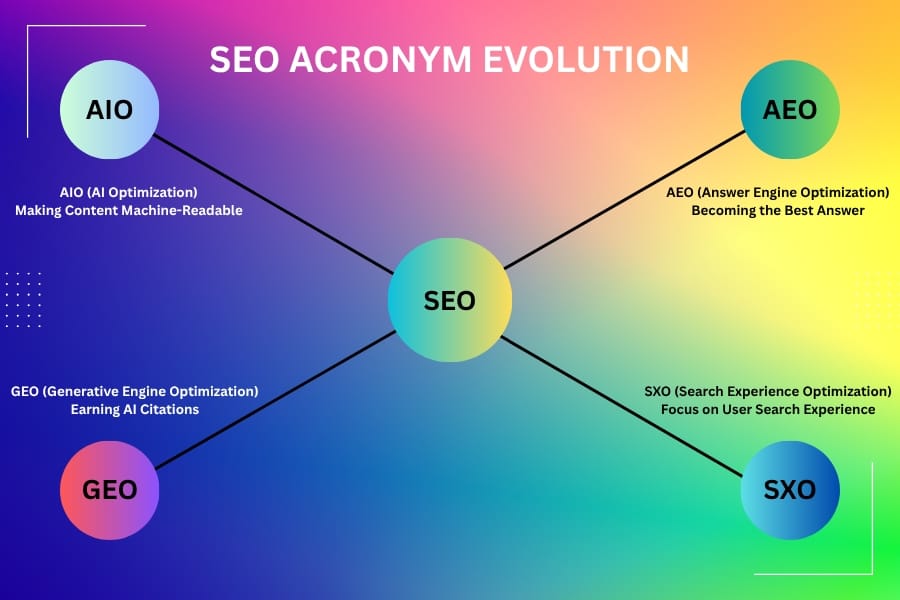Table of Contents
Deep SEO 2025: AI Mode, Deep Search Models & The Future of Search Optimization
The search landscape is undergoing its most dramatic transformation since the inception of Google. Traffic is declining, clients are anxious, and new acronyms are flooding LinkedIn feeds faster than algorithm updates. But here’s the reality check: SEO isn’t dead—it’s evolving into something more sophisticated, more challenging, and ultimately more rewarding for those who adopt it.
The panic rippling through our industry is understandable. AI Overviews now appear in over 50% of search results, zero-click searches account for nearly 60% of all queries, and new search technologies like Google’s AI Mode and deep search models are fundamentally changing how users discover information. Meanwhile, a confusing array of new optimization strategies—AIO, AEO, GEO, SXO—has emerged, leaving many wondering if their existing SEO knowledge is obsolete.
The truth is more nuanced. If you’re doing good SEO now, you’re already halfway to succeeding in this new landscape. The fundamentals haven’t disappeared; they’ve become more critical than ever. What’s changed is the need to optimize not just for traditional search engines, but for AI systems that summarize, cite, and recommend content.
The Reality Check: SEO Isn’t Dead, It’s Evolving
Understanding the Current Search Landscape
The search ecosystem of 2025 looks radically different from what it was just two years ago. Google maintains a dominant market share of 90%+ while simultaneously growing traffic by 21% year-over-year, defying predictions of its demise. However, the nature of that traffic has undergone a fundamental shift.
AI Overviews now dominate the space above the fold for informational queries, pushing traditional organic results further down the page. Studies show that AI Overviews are causing a 34.5% drop in position 1 click-through rates when present, with non-branded keywords experiencing a particularly severe impact, with a 19.98% CTR decline.
Meanwhile, conversational AI platforms like ChatGPT, Perplexity, and Gemini are reshaping user behavior. Users increasingly pose full questions or engage in dialogue-like exchanges rather than typing fragmented keywords. This shift toward natural language queries demands a fundamental rethinking of content optimization strategies.
Traffic Patterns and Client Concerns
The data paints a complex picture of the current state of organic traffic. While overall search volume remains steady, zero-click searches have reached 25.6% of desktop searches and 17.3% of mobile searches, meaning users find answers directly on search results pages without visiting websites.
Informational queries are most at risk for losing traffic, as AI systems can now create comprehensive answers using generative AI rather than simply listing source links. This has created widespread anxiety among content publishers and SEO professionals who built strategies around driving traffic to their websites.
However, the picture isn’t entirely bleak. Sites that appear in AI Overviews can experience higher-quality clicks and increased brand awareness. The traffic that does reach websites is often more qualified and conversion-focused, as users have already filtered through basic informational content via AI summaries.
Why Traditional SEO Still Matters
Despite the dramatic changes, core SEO principles remain more relevant than ever. Technical SEO, E-E-A-T (Experience, Expertise, Authoritativeness, Trustworthiness), structured content, and proper schema markup continue to be fundamental ranking factors.
Google’s algorithm updates focus on AI-powered search enhancements, first-hand user experiences, interactive content, and voice search optimization, but these build upon rather than replace traditional ranking signals. Sites with strong SEO foundations are better positioned to succeed in AI-enhanced search results.
The key insight is that SEO success now requires optimization for multiple touchpoints: traditional search results, AI Overviews, voice search, and conversational AI platforms. Businesses that embrace this multi-channel approach rather than fight against it are positioned to thrive.
Demystifying the AI Acronym Explosion
The SEO industry’s response to AI disruption has been to create a bewildering array of new acronyms. While some represent genuine strategic shifts, others are simply rebranded versions of existing best practices. Let’s examine what these mean and which deserve your attention.
The Evolution of SEO: From Traditional Optimization to AI-Powered Strategies
AIO (AI Optimization): Making Content Machine-Readable
AI Optimization (AIO) focuses on structuring content so AI systems can easily understand, process, and cite it. This isn’t entirely new—it builds directly on existing technical SEO and structured data practices.
Effective AIO involves several key elements:
Implementing comprehensive schema markup using JSON-LD format
Creating clear content hierarchies with proper heading structures
Using entity-based optimization to help AI systems understand topics and relationships
Ensuring content is crawlable and indexable by both traditional search engines and AI systems
The most critical AIO strategy is entity SEO. AI systems excel at understanding entities—people, places, concepts, and brands—and their relationships. Websites that clearly define their entities through structured data and consistent mentions across authoritative sources perform better in AI-enhanced search results.
AEO (Answer Engine Optimization): Becoming the Best Answer
Answer Engine Optimization (AEO) involves creating content designed to be the definitive answer to user questions. This strategy recognizes that users increasingly expect direct, comprehensive responses rather than lists of links to explore.
Successful AEO requires:
Researching and addressing question-based queries with clear, direct answers
Optimizing for featured snippets and rich results
Structuring content with FAQ formats and clear subheadings
Creating comprehensive, authoritative content that covers topics in depth
Voice search optimization is a crucial component of AEO. With over 50% of searches expected to be voice-based by 2025, content must be optimized for conversational, long-tail queries that reflect natural speech patterns.
GEO (Generative Engine Optimization): Earning AI Citations
Generative Engine Optimization (GEO) focuses on creating content that AI systems trust enough to cite and reference. Unlike traditional SEO, which aims for clicks, GEO success is measured by mentions, citations, and recommendations within AI-generated responses.
Key GEO strategies include:
Building authoritative, well-sourced content that other sites link to and reference
Maintaining consistent brand mentions across multiple platforms and sources
Creating original research and data that becomes citable source material
Developing expertise in specific topic areas rather than broad, shallow coverage
Brand mentions now matter more than traditional backlinks in the AI era, as AI systems evaluate authority through consistent recognition across diverse sources rather than just link quantity.

The Truth About These ‘New’ SEO Strategies
Here’s the reality: if you’re already doing comprehensive SEO, you’re implementing most of these strategies without realizing it. The fundamentals of creating high-quality, well-structured, authoritative content haven’t changed.
What has changed is the need to optimize for multiple AI systems simultaneously. Your content must perform well in traditional search results while also being suitable for AI summarization, voice search responses, and conversational AI citations.
The most successful approach is to focus on quality fundamentals rather than chasing acronyms. Technical excellence, content authority, and user experience remain the foundations of effective optimization, regardless of whether you call it SEO, AIO, or any other acronym.
Google’s AI Mode and Deep Search Revolution
Google’s AI Mode represents the most significant evolution in search functionality since the introduction of PageRank. Unlike traditional search that returns lists of links, AI Mode provides an end-to-end AI search experience with advanced reasoning, multimodality, and the ability to handle complex, multi-step queries.
Understanding AI Mode’s Advanced Capabilities
AI Mode uses query fan-out techniques, breaking down complex questions into subtopics and delivering comprehensive answers that often eliminate the need for users to visit multiple websites. The system leverages Google’s Gemini AI model to provide faster AI responses than any other platform in the industry.
Key features of AI Mode include:
Advanced reasoning capabilities for complex problem-solving
Multimodal search that processes text, images, and voice simultaneously
Follow-up question handling that maintains context across queries
Direct integration with Google’s Knowledge Graph for entity-based understanding
For users, this means a fundamentally different search experience. Instead of the traditional query → SERP → click → website → conversion funnel, the new pattern often looks like: query → AI reasoning → AI answer → decision made → (maybe) brand search → (maybe) website visit.
Deep Search Models and Complex Query Processing
Microsoft’s deep search feature, powered by GPT-4, demonstrates how AI systems are revolutionizing complex query processing. Deep search takes user queries and expands them into comprehensive descriptions of what ideal results should include.
For example, a query like “How do points systems work in Japan?” becomes: “Explain how various loyalty card programs work in Japan, including the benefits, requirements, and limitations of each. Include examples of popular loyalty cards from different categories, such as convenience stores, supermarkets, and restaurants.”
This expansion process enables search systems to:
A better understanding of user intent beyond surface-level keywords
Identify and address multiple possible interpretations of ambiguous queries
Provide more comprehensive and contextually relevant results
Handle multi-step reasoning tasks that require connecting disparate pieces of information
Impact on Traditional Search Results
The integration of AI Mode and deep search capabilities is dramatically reshaping traditional search results. AI Overviews now appear for over 50% of queries and are expanding to incorporate advertising and appear more frequently across all query types.
Research shows a significant impact on traditional organic listings:
34.5% drop in position 1 CTR when AI Overviews are present
Larger CTR losses for keywords not in the top 3 positions (-27.04%)
Particularly severe impact on non-branded, informational queries
Zero-click searches are increasing as users find complete answers on SERPs
However, branded searches show different patterns. Branded keywords are less likely to trigger AI Overviews (only 4.79%), but when they do, they receive an 18.68% CTR boost, suggesting that strong brand recognition protects against AI disruption.
What Still Works in Modern SEO
While the search landscape has transformed dramatically, the core principles that have always driven SEO success remain fundamentally important. Understanding what endures helps separate essential strategies from temporary tactics.
Core SEO Fundamentals That Never Change
Technical SEO has become more critical, not less relevant. If AI systems can’t crawl and understand your content, they won’t cite or recommend it. Essential technical elements include:
Site speed and Core Web Vitals optimization, with mobile LCP under 1.8 seconds
Proper crawlability and indexation for both traditional search engines and AI systems
Mobile-first responsive design that performs well across all devices
Secure HTTPS implementation and robust site architecture
Content quality remains paramount. AI systems prioritize authoritative, well-researched content over keyword-optimized but shallow material. High-quality content demonstrates:
First-hand experience and expertise in the subject matter
Comprehensive coverage that addresses user questions thoroughly
Original research and unique insights that provide genuine value
Regular updates and maintenance to ensure accuracy and relevance
E-E-A-T in the AI Era
E-E-A-T (Experience, Expertise, Authoritativeness, Trustworthiness) has evolved from a ranking factor to the foundation of AI-era SEO success. Google’s systems now prioritize first-hand insights and lived experience over generic content.
Experience optimization requires:
Author bylines with real bios and credentials
Case studies, authentic images, and testimonials
Proper schema markup for content attribution (Person, Author schemas)
Demonstration of practical, hands-on knowledge of the subject matter
Expertise signals include:
Professional credentials and qualifications are displayed
Industry recognition and citations from authoritative sources
Technical accuracy and depth in content coverage
Consistent topic focus rather than broad, shallow coverage
Authoritativeness is built through:
High-quality backlinks from trusted sources
Consistent brand mentions across multiple platforms1
Recognition by other experts in the field
Regular contribution to industry discussions and publications
Technical SEO Requirements for 2025
Modern technical SEO must account for multiple AI systems and search modalities. Key requirements include:
Structured data implementation:
JSON-LD format for maximum compatibility with AI systems
Comprehensive schema coverage for all content types
Entity markup to help AI understand relationships
Rich snippets optimization for enhanced SERP visibility
Voice search compatibility:
Conversational keyword optimization for natural language queries
FAQ schema markup for question-based content
Local SEO optimization for “near me” voice searches
Speakable schema for content suitable for voice assistants
AI system accessibility:
Clean, crawlable site architecture that AI systems can navigate
Proper internal linking that establishes content relationships
Image optimization with descriptive alt text for multimodal AI
Fast loading speeds that don’t hinder AI crawling
Leveraging AI in Your SEO Workflow
The most successful SEO professionals are those who embrace AI as a productivity multiplier rather than a threat. By integrating AI tools strategically into existing workflows, teams can achieve better results while reducing manual workload.
Essential AI Tools for SEO Professionals
The AI tool landscape for SEO has matured significantly, with proven solutions now available for most optimization tasks. Key categories include:
Content creation and optimization tools:
Surfer SEO for comprehensive content optimization and AI article generation
Clear scope for content scoring and topical relevance analysis
SEO.ai for keyword-optimized content creation with automated internal linking
Frase for competitor content analysis and outline generation
Technical SEO automation:
LangChain-based agent systems for automated technical audits
AI-powered site crawling and indexing issue identification
Automated schema markup generation for new content
Performance monitoring with AI-driven anomaly detection
Keyword research and analysis:
AI-powered keyword clustering using natural language processing
Search intent analysis for better keyword targeting
Competitor research automation with AI-driven insights
Long-tail keyword discovery through conversational AI
Content Creation and Optimization
AI excels at scaling content creation while maintaining quality standards. However, successful implementation requires careful process design and human oversight.
Effective AI content workflows include:
AI-generated content outlines based on SERP analysis and competitor research
Automated first drafts with proper keyword integration and structure
Human editing and fact-checking to ensure accuracy and brand voice
AI-powered optimization for readability and SEO performance
Quality assurance to avoid AI detection penalties
Key considerations for AI content:
Maintain human oversight for accuracy and authenticity
Add unique insights and experiences that AI cannot replicate
Ensure compliance with Google’s AI content guidelines
Focus on user value rather than pure AI efficiency
Structured Data and Schema Markup
Structured data has become essential for AI-era SEO success. Over 45 million domains now implement schema markup, representing a significant competitive advantage for early adopters.
Priority schema types for 2025:
Article schema for blog posts and news content
FAQ schema for question-based optimization
Local Business schema for location-based searches
Product schema for e-commerce optimization
Speakable schema for voice search compatibility
Video schema for multimedia content optimization
Implementation of best practices:
Use JSON-LD format for maximum compatibility
Validate markup using Google’s Rich Results Test
Implement comprehensive coverage across all content types
Monitor performance through Search Console’s Rich Results reports
Voice Search and Conversational Optimization
Voice search optimization has become critical as conversational queries continue growing. Key strategies include:
Content optimization for voice queries:
Target question-based keywords that reflect natural speech patterns
Optimize for local searches with location-specific content
Create FAQ-style content that directly answers common questions
Use conversational language rather than formal, keyword-stuffed text
Technical implementation:
Implement a speakable schema to highlight voice-suitable content
Optimize page speed for mobile voice search users
Ensure mobile-first design for voice search accessibility
Create featured snippet-optimized content for voice assistant responses
Managing Client Expectations in the AI Era
The current period of search evolution has created widespread anxiety among clients who see traffic declining and hear apocalyptic predictions about SEO’s future. Successful SEO professionals are those who can provide calm, strategic guidance during this uncertainty.
Communicating Changes Effectively
Client communication has become more critical than ever as the industry undergoes rapid transformation. Effective communication strategies include:
Educational approach:
Explain AI’s role in search without overhyping or dismissing its impact
Show how current SEO efforts translate to AI-era success metrics
Provide regular updates on industry changes and their implications
Use client-friendly language that avoids technical jargon
Evidence-based discussions:
Present data on traffic patterns and industry trends
Show competitor performance in the new landscape
Demonstrate ROI from AI-optimized strategies
Provide case studies of successful adaptations
Setting Realistic Timeline Expectations
AI-era SEO often requires longer timelines as strategies become more sophisticated. Key messaging points include:
Timeline realities:
AI optimization takes time as search engines learn to trust new signals
Content authority building requires consistent, long-term effort
Technical implementations may have a delayed impact as AI systems adapt
Competitive dynamics have changed with new optimization requirements
Success metrics evolution:
Focus on brand mentions and citations rather than just traffic
Measure AI Overview appearances and featured snippet performance
Track voice search visibility and conversational query performance
Monitor brand awareness metrics alongside traditional SEO KPIs
Being the Calm Voice During Industry Turbulence
Clients need strategic advisors, not additional sources of panic. Positioning strategies include:
Strategic perspective:
Emphasize long-term opportunities rather than short-term disruptions
Show how AI creates new optimization channels rather than just eliminating old ones
Demonstrate adaptability through case studies and proven results
Provide actionable next steps rather than abstract concerns
Confidence building:
Share success stories from similar businesses navigating AI changes
Explain your adaptation strategies and ongoing education efforts
Provide regular performance updates that show progress
Maintain transparent communication about challenges and solutions
Practical Implementation Strategy
Successfully transitioning to AI-optimized SEO requires a systematic approach that builds on existing strengths while incorporating new methodologies. The following framework provides a structured path forward.
Step-by-Step Migration Plan
Phase 1: Foundation Assessment and Optimization
Audit the current technical SEO performance
Evaluate site speed, crawlability, and mobile performance
Assess existing structured data implementation
Review content quality and E-E-A-T signals
Implement essential schema markup
Add JSON-LD structured data for all content types
Optimize for rich snippets and featured snippets
Include entity markup for brand and topic recognition
Optimize for voice search fundamentals
Research conversational keywords and question-based queries
Create FAQ content for common user questions
Implement a speakable schema for voice-suitable content
Phase 2: AI Tool Integration and Workflow Optimization
Select and implement AI SEO tools
Choose content optimization platforms based on specific needs
Integrate keyword research and competitor analysis tools
Set up automated monitoring for AI Overview appearances
Establish AI-enhanced content workflows
Create processes for AI-assisted content creation
Implement quality control measures for AI-generated content
Develop templates for consistent optimization
Train team members on new methodologies
Provide education on AI SEO tools and techniques
Establish best practices for human-AI collaboration
Create documentation for repeatable processes
Phase 3: Advanced Optimization and Scaling
Implement advanced AI automation
Deploy AI agents for technical SEO monitoring
Automate schema markup generation for new content
Set up predictive analytics for performance monitoring
Optimize for multiple AI platforms
Ensure content appears in ChatGPT and Perplexity responses
Optimize for Google’s AI Mode and deep search
Create content suitable for various AI summarization systems
Tools and Resources
Essential tool categories for AI-era SEO success:
Content optimization platforms:
| Tool | Primary Function | Price Range | Best For |
|---|---|---|---|
| Surfer SEO | Content optimization and AI writing | $89-129/month | Comprehensive content strategy |
| Clear scope | Content scoring and optimization | $170+/month | Enterprise content teams |
| SEO.ai | AI-powered content creation | $49-199/month | E-commerce and product content |
| Frase | Question-based content optimization | $45-115/month | FAQ and answer content |
Technical SEO and automation:
| Tool | Primary Function | Price Range | Best For |
|---|---|---|---|
| Screaming Frog | Technical SEO auditing | $259/year | Technical analysis |
| Schema Markup Generator | Structured data creation | Free-$20/month | Schema implementation |
| Google Search Console | Performance monitoring | Free | Essential monitoring |
| PageSpeed Insights | Core Web Vitals optimization | Free | Speed optimization |
AI-specific monitoring:
| Tool | Primary Function | Price Range | Best For |
|---|---|---|---|
| SE Ranking AI Overview Tracker | AI Overview monitoring | $55+/month | AI visibility tracking |
| BrightEdge | Enterprise AI SEO platform | Custom pricing | Large-scale operations |
| Conductor | Content performance analytics | Custom pricing | Content strategy |
Measuring Success in the New Landscape
Success metrics for AI-era SEO extend beyond traditional rankings and traffic. Key performance indicators include:
Traditional metrics evolution:
Organic traffic quality rather than pure volume
Conversion rates from remaining organic traffic
Brand search volume as awareness increases through AI mentions
Featured snippet appearances and rich result performance
AI-specific metrics:
AI Overview inclusion for target keywords
Voice search visibility for conversational queries
Citations in AI-generated responses across multiple platforms
Brand mentions in AI summaries and recommendations
Advanced measurement techniques:
Attribution modeling that accounts for AI touchpoints
Brand lift studies to measure awareness from AI exposure
Multi-channel funnel analysis including AI interactions
Predictive modeling for future performance trends
Future-Proofing Your SEO Strategy
The pace of change in search technology shows no signs of slowing. Building adaptable frameworks rather than rigid tactics ensures long-term success regardless of future developments.
Preparing for Continued Evolution
Search technology will continue evolving rapidly through 2025 and beyond. Key trends to monitor include:
Emerging search modalities:
Multimodal search combining text, voice, image, and video
Conversational AI integration is becoming standard across platforms
Real-time AI responses with current information synthesis
Personalized AI recommendations based on user history and preferences
Platform diversification:
Multiple AI search engines beyond Google and Bing
Social platform search features powered by AI
Industry-specific AI tools for vertical search optimization
Voice-first platforms for smart speakers and mobile optimization
Building Adaptable Frameworks
A successful long-term SEO strategy focuses on adaptable principles rather than specific tactics. Core framework elements include:
Quality-first approach:
Authoritative content creation that remains valuable regardless of the distribution channel
Technical excellence that ensures compatibility with future technologies
User experience optimization that translates across platforms
Brand building that creates recognition in any search environment
Multi-channel optimization:
Platform-agnostic content that performs well across different AI systems
Flexible technical infrastructure that adapts to new schema requirements
Scalable processes that accommodate rapid changes in best practices
Measurement frameworks that capture value across all touchpoints
Staying Ahead of Algorithm Changes
Proactive adaptation strategies help maintain a competitive advantage. Key approaches include:
Continuous learning systems:
Regular industry monitoring through reliable SEO news sources
Algorithm update analysis to understand impact patterns
Competitor intelligence to identify successful adaptation strategies
Performance data analysis to spot trends before they become obvious
Experimentation frameworks:
A/B testing for new optimization techniques
Pilot programs for emerging AI tools and strategies
Regular content audits to identify optimization opportunities
Cross-functional collaboration to leverage diverse perspectives
Frequently Asked Questions
Q: Are the new SEO acronyms (AIO, AEO, GEO) really necessary to learn?
A: If you’re already doing comprehensive SEO with quality content, technical excellence, and user focus, you’re implementing most of these strategies. The acronyms represent refinements of existing best practices rather than entirely new methodologies. Focus on the fundamentals: creating authoritative, well-structured content that serves users effectively.
Q: How much will AI Overviews hurt my website traffic?
A: The impact varies significantly by query type and content quality. Informational, non-branded queries see the largest traffic declines (up to 34.5% for top positions), while branded searches often see increased CTR when AI Overviews appear. Focus on building brand recognition and creating content that earns citations in AI responses
Q: Should I stop investing in traditional SEO and focus only on AI optimization?
A: Traditional SEO fundamentals remain critical because they form the foundation for AI optimization success1. Technical SEO, content quality, and E-E-A-T signals are more important than ever. The best approach is evolution, not revolution—build upon your existing strengths while incorporating AI-specific strategies.
Q: How do I optimize content for voice search in 2025?
A: Voice search optimization focuses on conversational keywords, question-based content, and local optimization. Key tactics include targeting long-tail, natural language queries, creating FAQ sections, implementing speakable schema markup, and ensuring fast mobile performance.
Q: What's the most important structured data to implement first?
A: Start with the Article schema, FAQ schema, and local business markup (if applicable). These provide the foundation for most AI systems to understand your content. JSON-LD format is preferred for maximum compatibility39.
Q: How should I communicate these changes to worried clients?
A: Position yourself as a calm, strategic advisor who understands both challenges and opportunities. Show how current efforts translate to AI-era success, provide regular education about industry changes, and focus on long-term opportunities rather than short-term disruptions.
Q: What AI tools are essential for SEO in 2025?
A: Essential categories include content optimization platforms (like Surfer SEO), technical auditing tools, and AI Overview monitoring systems. Start with tools that integrate into existing workflows rather than completely replacing current processes.
Q: How do I measure success in the new AI-dominated search landscape?
A: Expand beyond traditional traffic metrics to include AI Overview appearances, voice search visibility, brand mentions in AI responses, and conversion quality from remaining organic traffic. Focus on brand awareness and authority building alongside traditional SEO KPIs.




